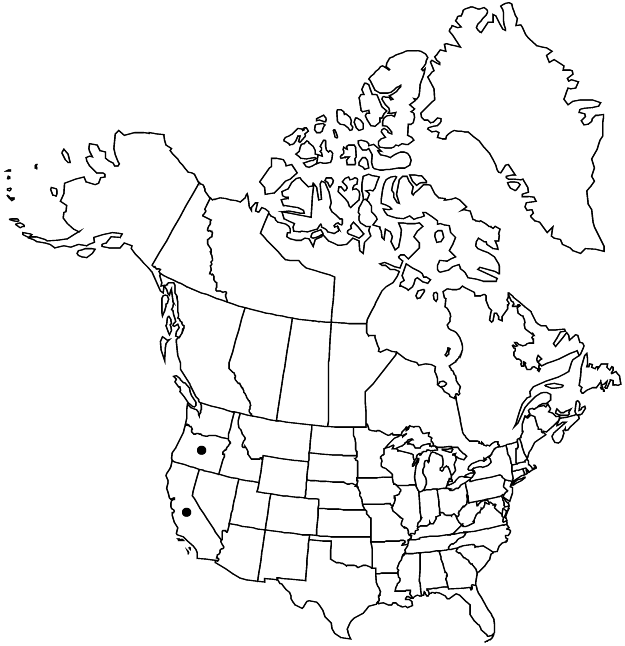Spergularia bocconi
in P. F. A. Ascherson et al., Syn. Mitteleur. Fl. 5(1): 849. 1919.
Plants annual, ± delicate, 6–25+ cm, often densely stipitate-glandular, at least in inflorescence. Taproots ± filiform. Stems erect to spreading or sprawling, usually much-branched proximally; main-stem 0.5–1 mm diam. proximally. Leaves: stipules usually inconspicuous, dull white to tan, broadly triangular, 1.5–4.5 mm, apex acute to short-acuminate; blade ± linear, 1–4.2 cm, at least moderately fleshy, apex apiculate to spine-tipped; axillary leaves absent or 1–2 per cluster. Cymes simple to 6+-compound. Pedicels often oriented to 1 side in fruit. Flowers: sepals connate 0.3–0.6 mm proximally, lobes often 3-veined, ovate to elliptic-oblong, 2.2–3.5 mm, to 4.5 mm in fruit, margins 0.2–0.5 mm wide, apex acute to rounded; petals white or pink to rosy, ovate to obovate, 0.8–1 times as long as sepals; stamens 8–10; styles 0.4–0.6 mm. Capsules greenish, 3 (–4) mm, 1–1.2 times as long as sepals. Seeds light-brown, with submarginal groove, broadly ovate, plump, 0.4–0.6 mm, somewhat shiny, smooth to minutely roughened, margins with peglike papillae (40×); wing absent. 2n = 18? (Africa), 36 (Europe).
Phenology: Flowering spring.
Habitat: Salt marshes, alkaline places, sandy soils
Elevation: 0-400 m
Distribution

Introduced; Calif., Oreg., sw Europe (Mediterranean region)
Discussion
The spelling of the epithet bocconi, often “corrected” to bocconii, is debatable. It commemorates Paolo Boccone, suggesting a correction to bocconei, but he also used the Latinized form Bocconus, allowing bocconi. We have used bocconi, following the first usage by Scheele.
Selected References
None.
Lower Taxa
"-1.2timesaslongassepals" is not declared as a valid unit of measurement for this property.